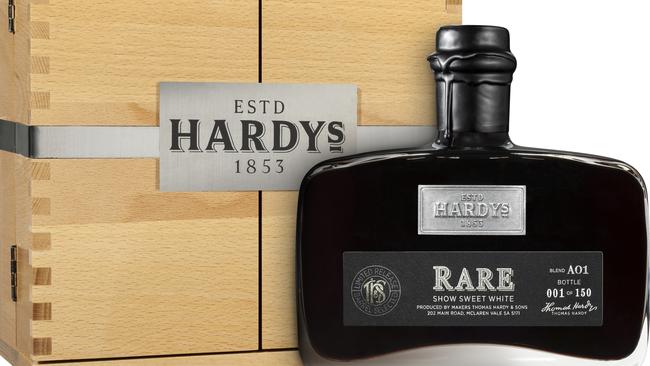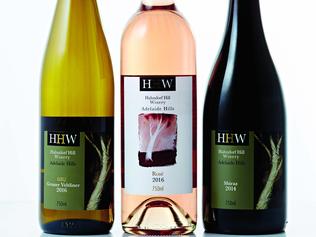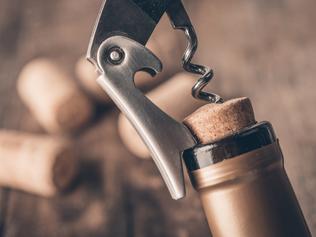Max Allen’s grapevine: Hardys rare fortified wines a sweet surprise
Just as one multinational quits the premium fortified wine game, another booze business decides they’re worth it.

We’re going from the sublime to the ridiculously good value this week. First up: some marvellous old wines that are worth every cent of their luxury price tags.
Just as one multinational drinks company, Pernod Ricard, decides to quit the premium fortified wine game by selling off the great old Morris winery in Rutherglen (as indignantly reported here on June 28), another global booze business, Accolade Wines, has decided that premium fortifieds are worth a big, appropriately pricey push and has released a suite of staggeringly good old sweet wines under the Hardys Rare label.
All are new blends put together from the ancient stocks of luscious wines maturing gently in barrel in the Hardys cellars — reboots, if you like, of old classics.
The Hardys Rare Tawny ($100) is a dark coppery colour and is beautifully balanced and subtle, with a pure flavour of concentrated grilled and candied hazelnuts on the tongue.
The Hardys Rare Muscat ($100) is deep chestnut in colour, an unctuous fluid that stains the inside of the glass with a bright ochre slick and fills the mouth with rich, plump raisins.
The Hardys Rare Show Sweet White ($250), made from muscadelle grapes, is pure power: such a deep burnt amber in colour it’s almost black in the bottle, and so old, so reduced, so sweet that it’s almost like drinking molasses — but with alcohol in it.
And the rarest fortified of them of all — the Hardys Rare Liqueur sauvignon blanc ($100), thought to be the only example of its kind in the world — is like no savvy you’ve ever had: made from super-ripe grapes and aged in barrel for decades, this wine seems to take the best elements of all the other three — the aromas of grilled nuts, the fruitiness of raisins, the lusciousness of super-old wine — and, lifted by the tang of the sauvignon, combine them into a glorious whole.
Together they are a fantastic celebration of the rich Australian tradition of fortified wine production. It’s great to see that some big drinks companies still care about this important part of our cultural legacy.
More: hardyswines.com.
John Vickery is to Australian wine what Don Bradman is to cricket: a bloody legend who set the standards by which all others are judged — except John’s still alive and still making wine, in conjunction with Phil Lehmann, son of another deadset legend, Peter Lehmann.
Vickery’s forte is riesling: his Leo Buring wines of the 1960s and 70s defined the classic, pure, dry, long-lived Australian style.
So when the young Lehmann coaxed Vickery out of retirement a couple of years ago to finally have a crack at producing some wine with his own name emblazoned on the label, what other variety could they have chosen but riesling?
Echoing John’s great Leo Buring Leonay and Richmond Grove wines of old, only two Vickery wines are produced: a Watervale riesling from the Clare Valley and an Eden Valley riesling from the hills above the Barossa.
The 2016 vintages of both have just been released and they’re gorgeous: the Watervale is pure lime-juicy refreshment, seriously more-ish, with lovely floral citrus blossom aromas leading on to a mouthful of crunchy white grapes; the Eden Valley is also beautifully pure, precise and focused, with a little less of the juicy grapes and more of the citrus cut.
The good news is that these wines retail for $23 a bottle — closer to $20 or less if you shop around and buy by the case.
And I suggest you think about doing just that: they are mouth-wateringly delicious now but you can be confident they will also age slowly and deliciously across the next 10, 15 even 20 years.
More: vickerywines.com.au.


